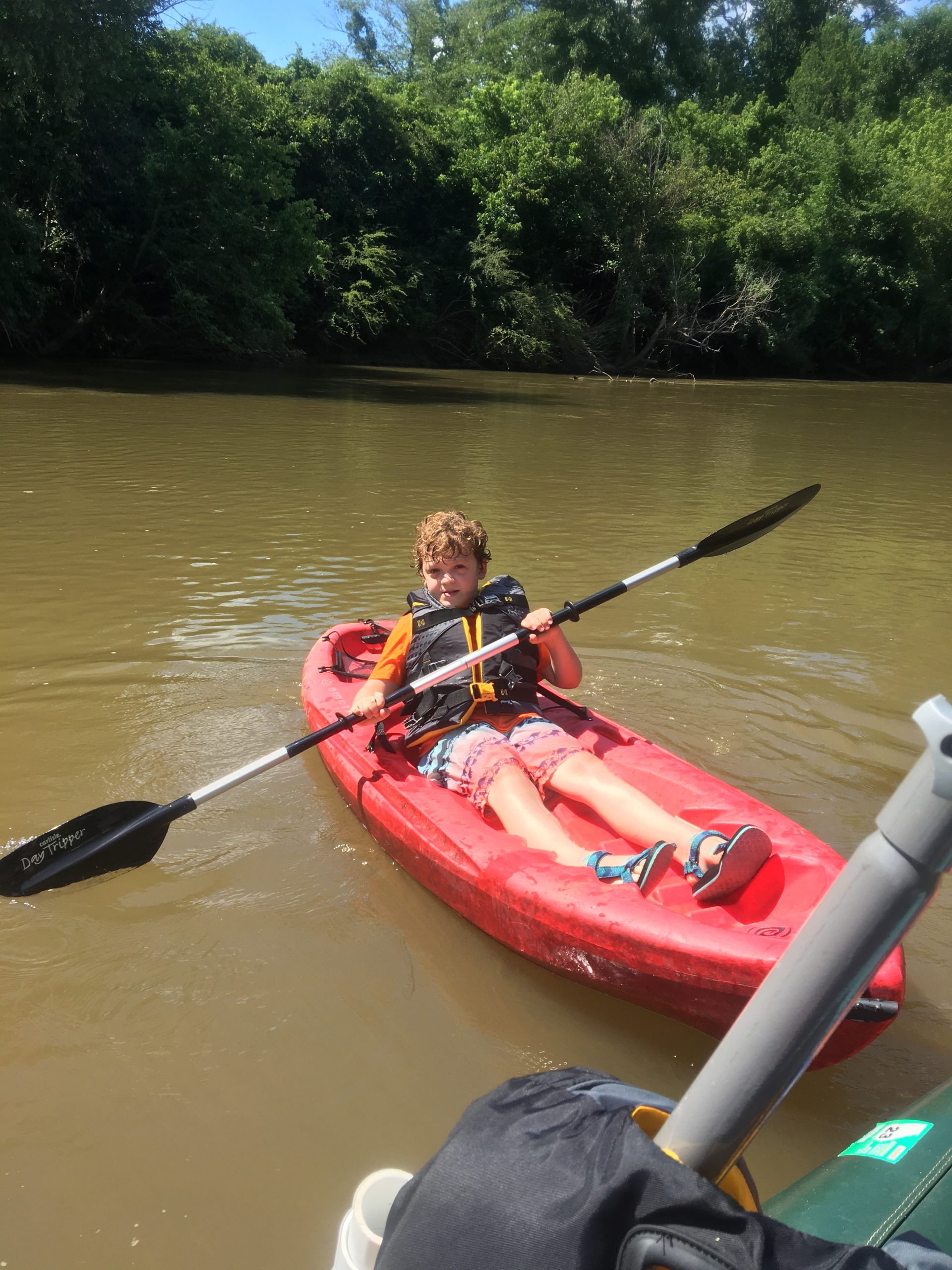
Paddling Safety
PADDLING
SAFETY
SAFETY
Paddling Safety
One of the reasons we enjoy paddling because we get to be closer to nature. While enjoying the beauty of nature, we must also be aware of its dangers. Being aware of potential dangers will help you prepare for them and have a safe and enjoyable trip.

Safety
Personal Flotation Devices (PFDs): Georgia law requires that each person in your group have an approved PFD (Type I, II, III, or V) that fits properly and is in good working condition. Please review the information on the Georgia DNR website on current boating and personal watercraft regulations.
According to regulations, any child under 10 years of age is required to wear a PFD while in any moving boat, except when in an enclosed cabin. Wearing a PFD is the easiest way to prevent fatal accidents while out on the river.
Water Hazards
While part of the beauty of the river, certain features can become obstacles and hazardous when paddling. For example, rocks/bedrock ledges, rapids/shoals, bridges, and overhanging trees/branches can create obstacles or tip you over. Look ahead so that you will be prepared to maneuver around any obstacles.
In areas of bedrock ledges and rapids, look for the area with the smoothest water that is shaped like a “V” pointing downstream. The smoothest water is likely your clearest path through rapids and over bedrock ledges. Canoes and kayaks can also be pinned between the current and a hazard if caught sideways between the two.
When looking ahead, if a certain section looks too difficult for your group, stop a distance upstream and plan a route through or around the obstacle, perhaps even portaging around it.
Groups
When travelling in groups, keep an eye on other group members; this will allow you to quickly help others if they do run into a potentially dangerous situation. In large groups use the buddy system, with pairs of canoes/kayaks watching out for each other. Provide a safe distance between yourself and the paddler in front of you so they can safely navigate an obstacle. Watch other members of your group until they have safely passed obstacles. In a group with diverse paddling experience, it is helpful to have your most experienced paddlers watch out for the less experienced members of your group.
In open water sections, such as Clark’s Hill Reservoir, stay out of the main lane of traffic. Canoes and kayaks require less draft and will not compete for space in the shallower areas of water. Allow motorized boats to pass you instead of crossing in front of a vessel that is likely less maneuverable than you. Also wear bright-colored clothing to make yourself more visible if you become separated from your vessel.

Strainers
Strainers are places where water can pass but you cannot, such as under downed trees, bridge pilings, and some rock ledges. In some rivers, utility pipes may cross the river and become a strainer depending on the water depth. Be on the look out for strainers; getting caught in a strainer can be deadly.
Low-head Dams
Even a very short low-head dam creates dangerous hydraulics that can become deadly. Beware of paddling near low-head dams.
Water Visibility
After a rain, Georgia rivers get muddy and seeing obstacles and avoiding them can be more difficult. So exercise caution and be sure to wear your PFDs when the river is muddy.
Wildlife
We all enjoy seeing wildlife and must remember that we are sharing its environment. For example, there are several species of poisonous snakes within the watershed, so be observant when making stops along the river.
Other water users
Swimmers and people doing other recreational activities also use the river. Provide plenty of room between yourself and other river enthusiasts.
Preparedness
Check the weather before you leave. When the weather is cooler, wear quick-drying clothes and take layers. Staying dry and warm makes a trip a lot more fun when it is cool outside.
Check the water levels within the river before you head out. There is a USGS gage on the Broad River at Carlton (Highway 72). Higher water typically means the river will be muddy and flows might make paddling difficult. Low water can create more obstacles to maneuver within the river.
Let someone know where you are going and when you will likely be home.
Be prepared to stay out longer than you expect. Unexpected water conditions or taking a more leisurely float might make your trip longer than you thought. The following is a good list of items to have on any float trip.
Wear appropriate shoes. If you have to get out of your craft, broken glass, metal items, can cause injuries through thin shoes like flip-flops. If you need to portage or pull your craft over bedrock shoals or obstructions, flip-flops or bare feet also may not provide appropriate support.
Leave glass bottles and other glass containers at home. Broken glass in the river can cause injury to other people and their equipment on the river.
Checklist of Items to Take
▪ PFDs ▪ Sunscreen ▪ Sunglasses / hat ▪ Water ▪ Food ▪ Appropriate clothing ▪ First aid kit with matches ▪ Waterproof bag / pouch for cell phone and other items. ▪ Flashlight
▪ Bailer ▪ Small repair kit including duct tape ▪ Compass / GPS and map ▪ Spare paddle ▪ Safety whistle
Links
American Canoe Association
Etowah River water trail paddling safety and etiquette.
Georgia Canoeing Association
Georgia Department of Natural Resources Boating Guide, Safety